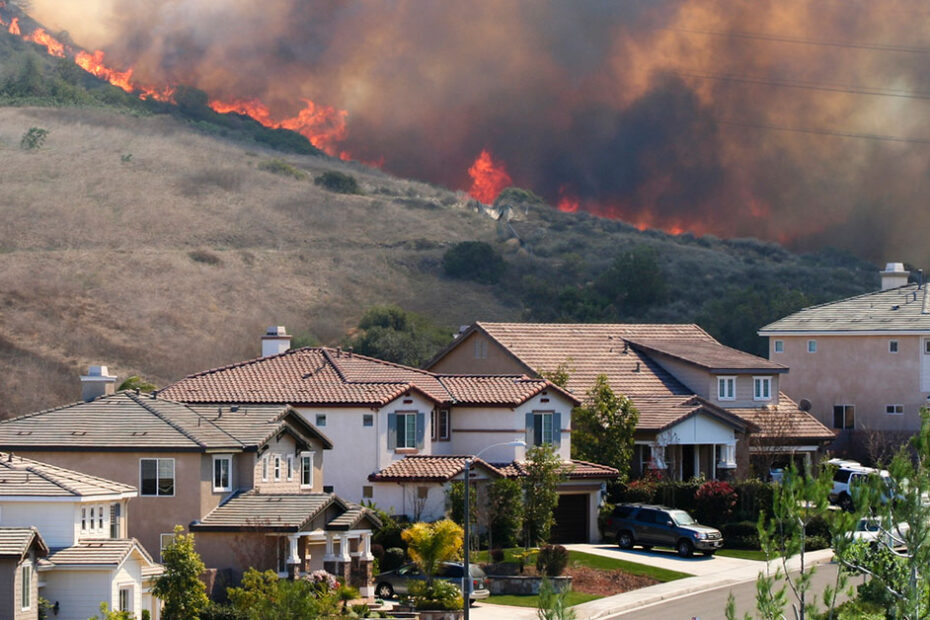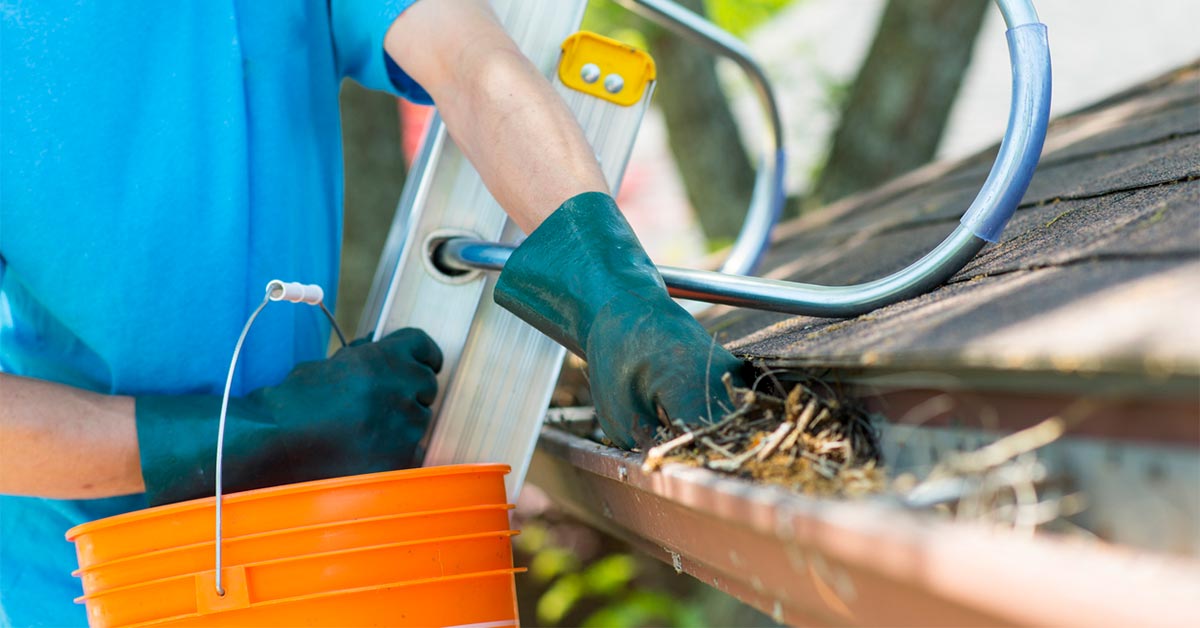According to CalFire, California has experienced 3,243 wildfires this year, totaling more than 145,112 acres burned. Although wildfires may not be the first to come to mind when thinking about the Golden State, California routinely tops the list of states with the most wildfires. With the rise in intensity of natural disasters, it’s highly important that residents in areas prone to wildfires fortify their residences and take proper measures to protect their homes. From creating defensible spaces to investing in fireproof materials, we’ll explore a few ways residents can help safeguard their homes from California wildfires.
Understanding California Wildfires
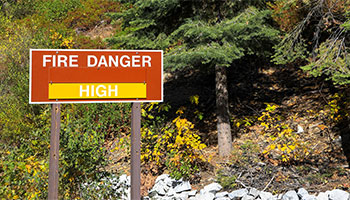
Regardless of the time of year, California wildfires pose a significant threat to people and their properties. But why is it that California experiences the most wildfires than any other state? The state’s dry climate, coupled with regional winds and vegetation, is a large reason for such wildfire activity. Understanding the conditions that allow wildfires to boom is the first step towards protecting your home from a natural disaster. Thankfully for residents, California has plenty of data available to help shed light on the likelihood of such an event affecting your community.
Some of the most prominent factors contributing to wildfire risk include dry and hot weather conditions, strong winds, and proximity to vegetation or forested areas. Proper proactive measures to safeguard homes and property in these areas are essential.
Ways to Protect Your Home Against California Wildfires
Create a Defensible Space
Establishing a defensible space around your home is one of the most effective ways of protecting it during California wildfire season. A defensible space is a buffer zone between a structure and its surrounding landscape. The defensible space helps stop or slow the spread of a fire to minimize damage due to embers, flame contact, or radiant head. Plus, depending on where you live, creating a defensible space may be required. San Diego County, for example, requires 100 feet of an initial clearance zone. For more information, click here.
Consider the following tips when planning a defensible space around your home.
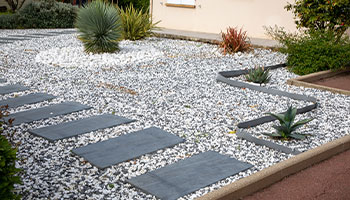
Clear out vegetation and debris: You should begin by removing any dead or dry vegetation around your home’s structure. Dead plants, dry leaves, and fallen branches or trees may not seem like a hazard, but if an unexpected wildfire strikes, having these items close to your home will only add extra fuel for the fire to consume. If you have shrubs or trees nearby, keep them well-spaced and properly trimmed to limit the amount of wildfire fuel.
Maintain a safe zone: In most cases, creating an initial defensible zone of at least 30 feet around your home will provide adequate protection. However, some counties prone to wildfire may require residents to increase the zone to 50 feet or more. Within this safe zone, you’ll need to keep any vegetation low, trimmed, and distant from one another.
Follow fire-resistant landscaping techniques: If you’d like to maintain a certain look on your property, you can use fire-resistant landscaping techniques to protect your home. For example, choosing gravel paths or stone walls over patches of grass and wooden fences can act as firebreaks instead of fire fuel. Practicing such landscaping techniques will greatly enhance your wildfire home protection.
Using Home Hardening Measures
Home hardening refers to measures that make your home more resistant to wildfires. Such steps increase your home’s resilience to fire, reducing the risk of severe damage or destruction in California wildfires. Consider the following home-hardening measures when upgrading your home’s defense.
Choose fire-resistant building materials: One of the easiest ways to strengthen your home’s defense is to use fire-resistant materials when constructing or renovating your home in a fire-prone area. This can include using fire-resistant roofing materials, fencing made from brick or concrete, and non-combustible siding like stucco or metal.
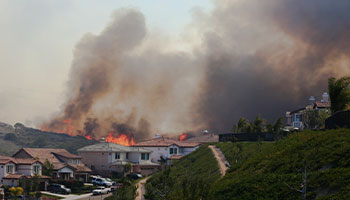
Ember-resistant vents and screens: The fire itself isn’t all you need to worry about during a wildfire. Flying embers combined with the dry, hot environment can cause external and internal fires if they land on combustible materials. Covering vents with metal wire mesh can help keep wind-blown embers from entering your home’s attic or foundation, greatly enhancing your California home’s wildfire protection. When it comes to your windows, consider replacing single-pane windows with multi-plane windows with tempered glass if possible.
Secure your home’s vulnerable areas: Your roof is one of the most vulnerable areas during a wildfire. To safeguard your home, reinforce your roof with fire-resistant materials such as Class-A rated asphalt shingles or metal to increase its defense against embers and heat. Additionally, installing fire-resistant door frames and replacing wooden doors with other materials can greatly prevent significant damage due to embers.
Don’t Forget About Homeowners Insurance
Although homeowners insurance won’t prevent damage to your home during a wildfire, most policies will cover damage from wildfires after the fact. This can provide a financial safety net to help with repairs after a fire. However, if you live in an area with a high risk of wildfires, you may find it challenging to find affordable California home insurance. Still, this doesn’t mean you are entirely out of options if you live in a high-risk area and can’t find coverage.
If you’ve exhausted all of your options, you may want to consider coverage through California’s FAIR Plan. California’s Fair Plan is a state-backed program that offers access to insurance for residents living in high-risk properties. Keep in mind, however, that the program has fewer coverage options and lower policy limits than other private or premier carriers. Still, having some form of coverage is always better than having none. In addition to California’s FAIR plan, you may find coverage through a surplus or excess line carrier that takes on clients that standard marketplace companies won’t.
AIS Is Here to Help
Whether you’re starting your search for a new homeowners insurance provider or are having difficulty finding coverage, AIS can help. With over 55 years of experience navigating the insurance marketplace, our specialists can assist you with finding a home policy that works best with your needs. With our growing network of trusted insurance carriers, we are confident that we can help you search and find reliable homeowners coverage. To get started, give us a call at (888) 772-4247 or start a new quote online for free.
The information in this article is obtained from various sources and offered for educational purposes only. Furthermore, it should not replace the advice of a qualified professional. The definitions, terms, and coverage in a given policy may be different than those suggested here. No warranty or appropriateness for a specific purpose is expressed or implied.
